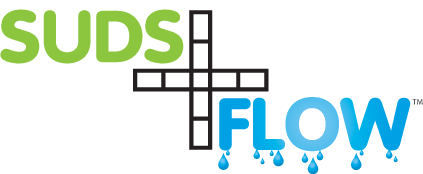
SPACERS FOR PERMEABLE PAVING
Overview Data
Environmental Validation
It is our company’s stated intention for SuDSFLOW to become one of the best validated SuDs paving systems and as such strives to comply with the requirements for the Code for Sustainable Homes, BREEAM, the EU Water Framework Directive and the DEFRA Future Water document.
The use of SuDSFLOW spacers in combination with suitable paving units (e.g. without nibs) and bedding materials should address water management, pollution removal and rainwater recycling issues, thereby providing a sustainable drainage system.
Infiltration System
SuDSFLOW spacer permeable modular pavement systems allow rainwater to directly infiltrate into the subgrade. SuDSFLOW can also be used as part of a Tanked System allowing rainwater to attenuate before release, particularly useful in rainwater harvesting projects. Additionally, the same system can be useful where difficult or contaminated sub-grades are encountered.
Controlled Run-off/Discharge Water
For rainfall occurrences with minimal rainfall depths (<5mm) there should be no effective run-off from a SuDSFLOW pavement. A design incorporating SuDSFLOW spacers allows water to infiltrate through vertical channels within the pavement during heavy periods of rainfall, thereby substantially reducing the likelihood of run-off. Further the compacted sub-base has voids of around 30% of volume which should allow storm water to be attenuated within the system and released in a controlled manner over a period of time.
Made from Recycled Material in Great Britain
SuDSFLOW spacers are made from 100% recycled polypropylene. The feedstock from the recycled material is a mixture of post-industrial (scrap material from companies producing plastic goods) and post-consumer (shampoo bottles / lids etc).
A Certificate of Conformity can be issued for orders placed with us.
Furthermore, our spacers are manufactured by our local Injection Moulding Company in England rather than being produced overseas. This avoids worldwide shipping to reduce the impact on the environment as we actively look to reduce our carbon footprint.
 Manufactured from 100% recycled materials
Manufactured from 100% recycled materials
 Proudly made in Great Britain
Proudly made in Great Britain